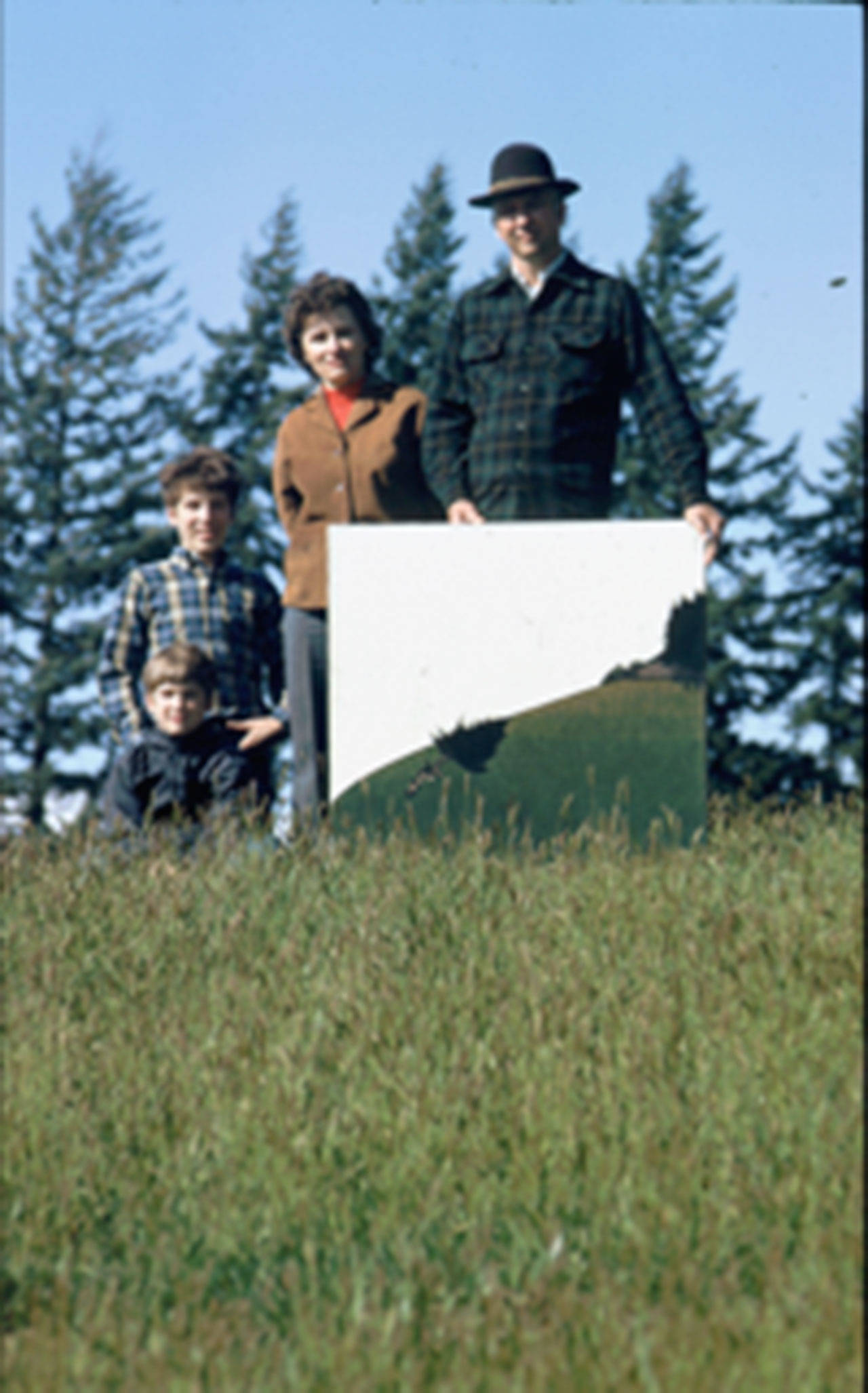By all accounts, Art Hansen was a prolific artist and generous man. The beloved island painter, printmaker, father, husband and Vashon native died on June 28 at the age of 87.
A celebrated Northwest artist, Hansen was born on Vashon and had deep island roots: His grandfather, Terkel Hansen, established the first bank on the island; his grandmother’s roses still grow in the artist’s garden on the island’s west side; and iconic Vashon images of barns, roses and poppies, ponds and landscapes, sunsets and rain are the signature subjects of Hansen’s revered work.
And while the images speak to the hearts of many islanders drawn to the familiar scenes, they also resonate with a wider audience. In addition to hanging in numerous Vashon homes and businesses, Hansen’s work adorns houses across the region and is part of collections at Boeing, Microsoft, Seattle Art Museum, Tacoma Art Museum, Davis Wright Tremain, New York Public Library, Smithsonian Associates and the Library of Congress.
“He got to make art his whole life,” Janice Mallman, former gallery curator for Vashon Allied Arts/Vashon Center for the Arts (VCA), said with evident admiration.
Sam Davidson, owner of Seattle’s Davidson Gallery and who has represented Hansen since the 1970s, concurred: “He supported his family, which not many artists can say. He was disciplined and committed.”
Hansen’s artistic career launched in 1952 with a one-man show at the Seattle Art Museum — the same year he graduated from the University of Washington. The following year, he received a Fulbright Scholarship to study at the Munich Academy of the Arts, where he developed his own etching technique and met his wife and lifelong partner, Gerda, who lived in nearby Nuremberg. Having earned a Master of Fine Arts degree from the University of Minnesota in 1957, Hansen began showing his work first in New York and then on Vashon at VCA and in Seattle with Davidson Gallery.
“We commissioned prints and posters and did many exhibitions over the years,” Davidson recalled. “And we’ve been working on a catalogue of his 530 original subjects.”
Hansen rendered his many subjects in multiple mediums — pen and ink, oils, etchings, lithographs, and in the last 15 years, watercolors. According to Davidson, he loved Japanese prints, which “influenced his compositional components.” In the early years, Hansen worked from memory depicting urban scenes, Davidson said, but when he and Gerda settled on Vashon in 1962, the artist “switched to working on location and directly from nature, from recollected imagery to the immediacy of being on location.”
That location was often in his garden and studio, or in the house he hand-built with Gerda on their 15-acre island property. His son, Knut, remembers his father working around the house and on the acreage when he was not in the studio creating art. Yet, he always found time to play with Knut and his younger brother, Ben, and later with his grandchildren.
“When we were younger, we would play baseball in the field we kept mowed,” Knut said. “He always liked family gatherings, not big crowds. He liked to sit down and have a nice dinner and conversations with the kids. He was generous to me, my brother and our children.”
“Generous” is the word that peppers Mallman’s descriptions of her “good friend for over 30 years.”
“He was so, so generous,” Mallman, who sold much of Hansen’s art through annual print sales and gallery shows at the Blue Heron, said. “He gave many pieces to his friends and his two dear sons and supported Vashon Allied Arts by never taking a commission on all the sales.”
He also gave the organization numerous lithographs to give to donors because he believed in the work VCA did to cultivate the arts on the island.
“He said, ‘I wouldn’t want to live on this island if VCA was not here to support the arts. We need more people to become members, and I can give them a present (of a lithograph). This is how I can help,’” Mallman recalled.
Donna Kellum, owner of Frame of Mind, framed most of the donated lithographs, which she said contributed greatly to the number of people who have his work.
“If I say there were 1,000 lithos, it would sound like I’m exaggerating, but possibly not,” Kellum said. “He had a funny sense of humor. He was so kind and humble, so generous. He loved this community. He was rooted in it.”


